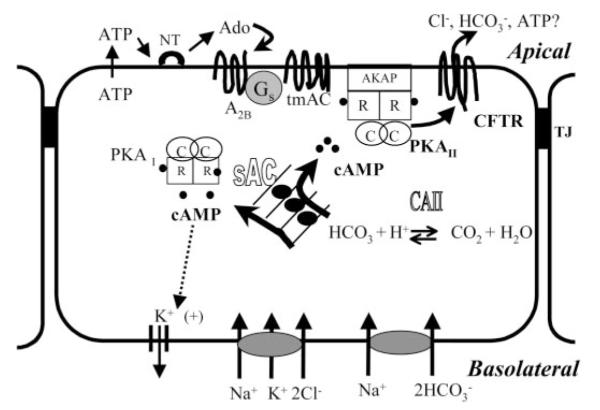Fig. 5.

Model for the role of sAC in anion transport signaling in corneal endothelium. Basolateral Na+-K+-2Cl− and Na+-2 cotransporters load Cl− and , respectively, into corneal endothelial cells. stimulates sAC, producing cAMP throughout the cell, activating PKA I, PKA II, and possibly cAMP-dependent K+ channels. The activation of apical CFTR enhances anion efflux. Activated CFTR facilitates ATP release across the apical membrane. ATP is converted to adenosine (Ado) by ectonucleotidases (NT). Adenosine binds to A2B receptors, stimulating local cAMP production and phosphorylation of CFTR via PKA II. Any form of stimulated apical anion efflux depolarizes the membrane voltage, thereby increasing the driving force for basolateral Na+-2 cotransport and maintenance of sAC stimulation. TJ, tight junction; CAII, carbonic anhydrase II; tmAC, transmembrane AC; AKAP, A-kinase-anchoring protein; R and C, regulatory and catalytic subunits, respectively.
